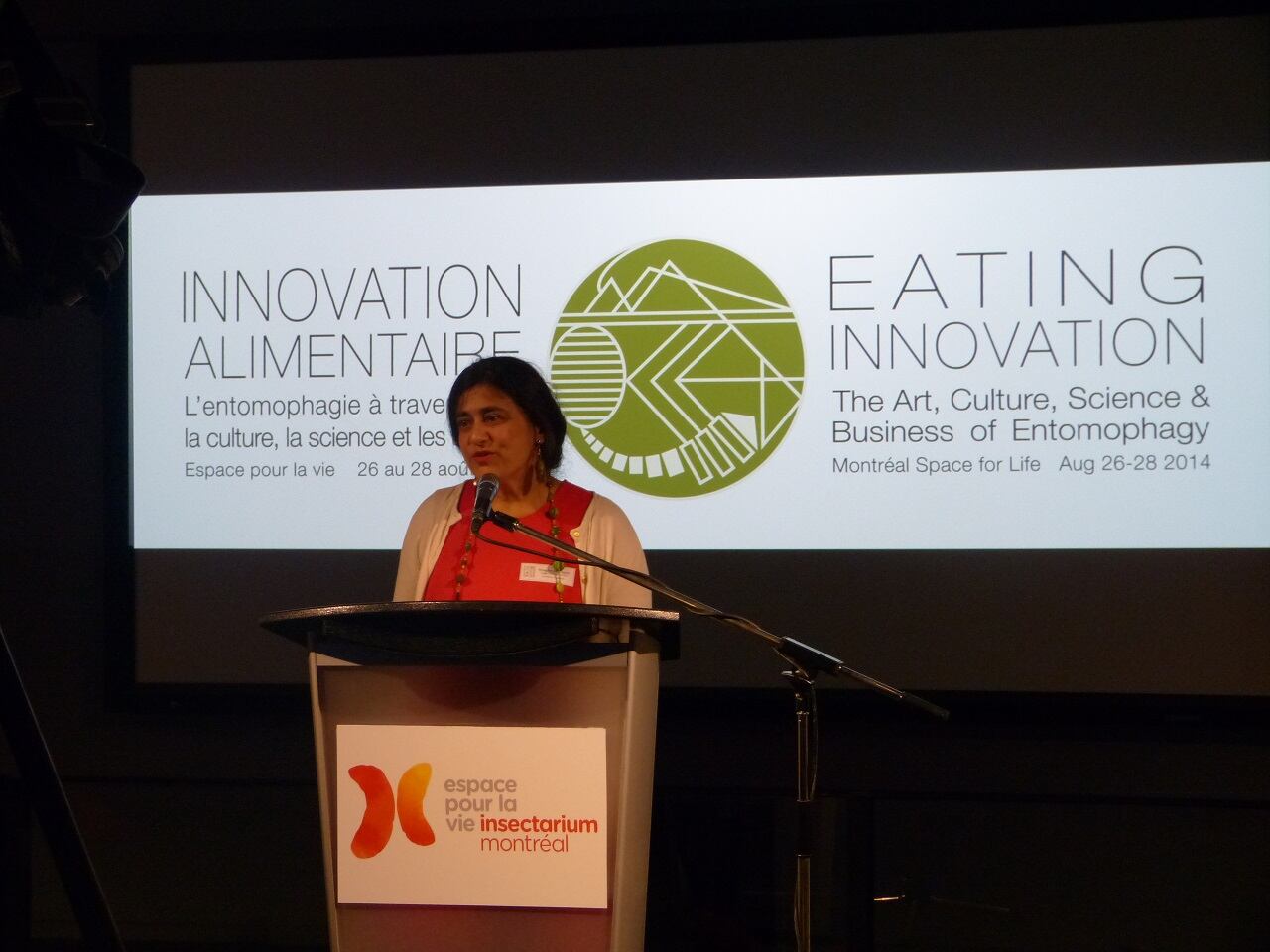“It is really time to get together and share ideas, identify research paths and coordinate efforts to make sure we fill the gaps in research, funding and regulatory issues for this market,” Dr. Handa told FoodNavigator-USA. “Insects really are abundant—there are 1,500 species we can eat that are already parts of diets of 2 billion people around the world. In that sense, insects are an ancient food, but we refer to them as the future of food for western Europe and America, because it’s incumbent upon us to eat them.”
Dr. Handa, along with the Future Food Salon Group and urban agriculture firm Third Millennium Farming are using a three-pronged approach to grow the sector: building a market for edible insects through events like the Future Food Salons, bug and beer pairings and arts exhibitions; consulting companies getting into the edible insect business about food standards, organics, marketing and developing insect farming and biowaste usage technologies; and advancing the knowledge of the sector through events like the Eating Innovation conference (in collaboration with the Montreal Space for Life Insectarium).
This interdisciplinary approach—involving everyone from farmers and chefs to artists, scientists, entrepreneurs, non-governmental associations and financiers—aims to foster enthusiasm for helping shape the future of food policy in the US. “We’re encouraging everybody to get involved because this is a really interesting kind of innovation. We’re taking something that was previously considered a pest or not considered at all that is now being considered food,” Dr. Handa noted.
A chance to get it right from the start
The nascent US market presents a number of challenges, such as determining how to classify insects (as meat or as their own separate category) and how to approach rearing them for human consumption from a regulatory standpoint.
Because typically the whole insect is consumed—as opposed to livestock such as poultry, swine and cattle, where much of the guts and areas where toxins concentrate are not eaten—Dr. Handa noted that food-grade insects should be fed organic as opposed to conventional feed, which presents challenges of its own because organic insect feed like carrot tops decomposes quickly.

“Everyone in the sector seems to be very keen to work with insects to highest possible standards in view of the fact that the moment we don’t have standards to adhere to,” Dr. Handa said. “We have a real opportunity here to do things right and get it right from the beginning. We need the cooperation of governmental and regulatory bodies to figure out how to do this properly.”
Funding is also a challenge, with investments largely coming from companies interested in the sustainability aspect of edible insects, though Dr. Handa is optimistic that as production costs come down, the field will become more attractive to investors. “It definitely takes a forward thinking corporation or foundation to understand why this is good to invest in,” she said. “Right now, the price for insects is quite high because the market is so small. As the market grows, it will become cheaper to produce them to a food grade standard.”
First the intrepid eaters, then…
The Future Food Salons’ appeal among trend setters and daring eaters (an upcoming consumer-geared event features beer and cricket canapés) will hopefully have a trickle-down effect, Dr. Handa noted.
“We get some people who come for the sustainability aspect, but there are also the intrepid eaters, who will try anything out of the ordinary,” Dr. Handa said, noting that this population subset can influence future tastes in the population as a whole.
“Intrepid eaters make up about 4% of the population. They were important as hunter-gatherers because they tried what others were too scared to try. They help expand our diets. We need them now, because there’s no way we’ll be able to continue with the amount of livestock we’ve been eating with the population on track to reach 9 billion in 2050.”
In the early stages, derivative products, such as protein bars and cereal that incorporate powders or crushed, dried insects, will also be essential to boosting wider consumer acceptance.
“As this market grows, it is going to be derivative products that are going to be more popular on the shelf. There’s potential for all kinds of products—be they corn flakes, cookies or crackers mixed with cricket protein; insect protein powders; dry roasted insects; BBQ or cheddar flavored meal worms. There are more niche products like lollipops with a whole bug visible inside. Obviously, you’re not going to eat for protein. But it helps people get accustomed to it.”
So will Westerners ultimately embrace entomophagy? Dr. Handa thinks so, likening the current environment to the one for sushi 40 years ago. “No one was eating sushi in the US then,” she said. “People thought, ‘Raw fish? Absolutely not.’ To this day, there are still significant portions of the population that won’t eat sushi. But unlike insects, sushi is not sustainable. Insects give us a totally different opportunity.”
The next salon will take place on Feb. 19, 2014, in Austin, TX.
